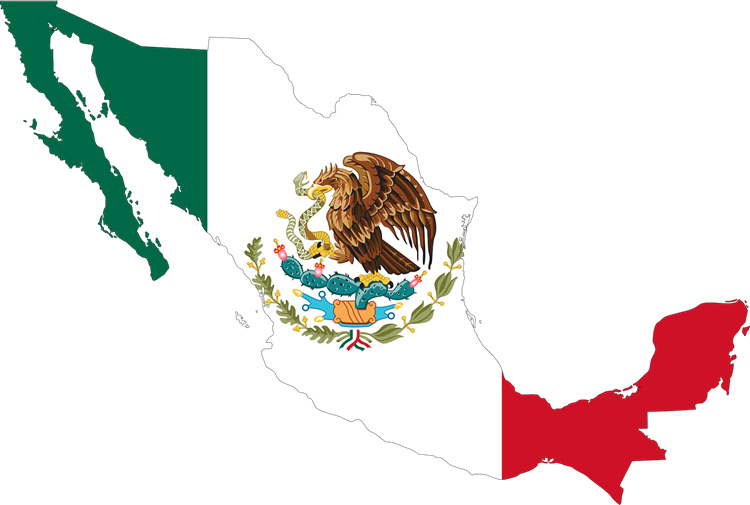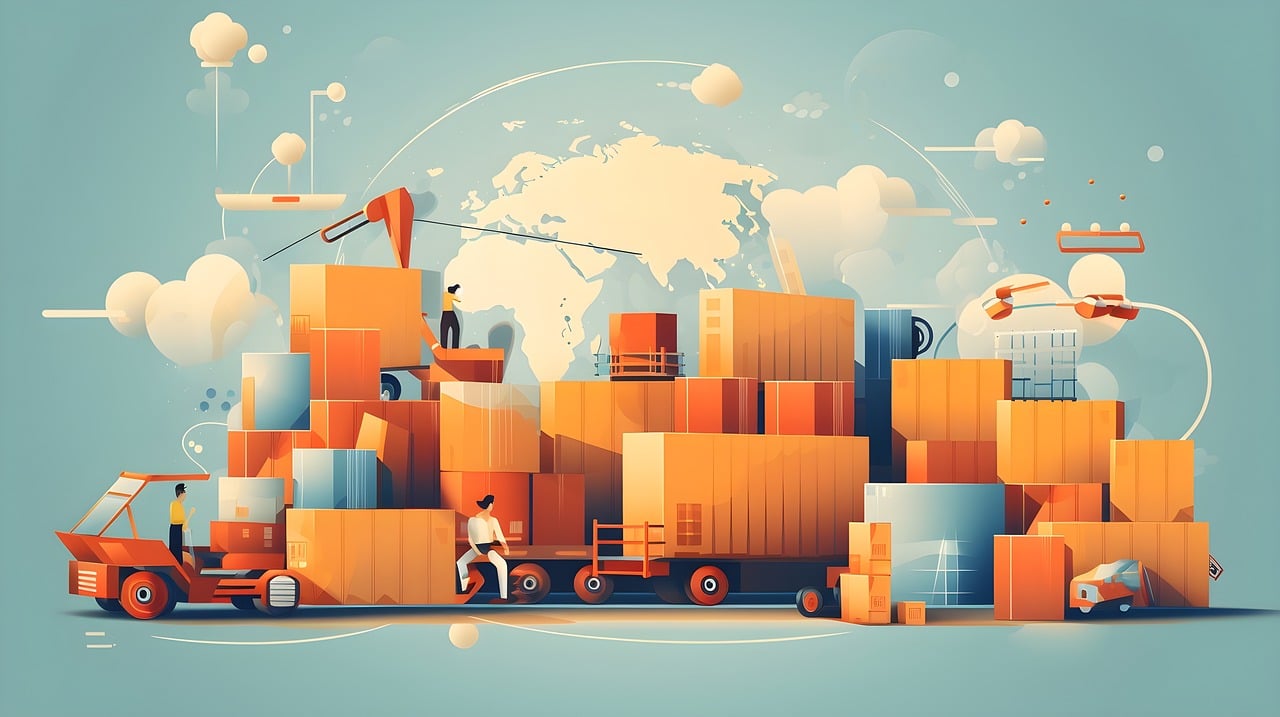Mexico's Multimodal Transport: A Comprehensive Overview

Mexico's Multimodal Transport plays a crucial role in the nation's infrastructure. The country has invested heavily in transportation, with MX$77 billion allocated to infrastructure in the first quarter of 2024. This investment represents 22.8% of total physical investment. Projects like the Mayan Train and the Isthmus Train aim to enhance connectivity and economic development. Regulations allow foreign and Mexican operators to engage in international multimodal transport contracts. These efforts highlight the importance of multimodal transport for economic growth and sustainability.
Key Multimodal Transport Projects

Isthmus of Tehuantepec Corridor
Objectives of the project
The Isthmus of Tehuantepec Corridor aims to transform Mexico's Multimodal Transport landscape. The project seeks to create a new trade route between Asia and the East Coast of the United States. This corridor will enhance regional connectivity and economic growth. Ten strategically located industrial hubs will drive economic development in the region. These hubs will boost local and regional economic efficiency.
Progress and developments
The Isthmus of Tehuantepec Corridor has seen significant progress. Investments in transportation infrastructure have accelerated due to this project. The Mexican government has focused on developing the corridor to improve logistics and supply chains. The integration of the corridor with other transport projects enhances its effectiveness. This integration opens doors to economic and social growth for Mexico.
Expected impact on regional connectivity
The Isthmus of Tehuantepec Corridor will significantly impact regional connectivity. The corridor will link key industrial hubs, facilitating efficient production processes. Improved connectivity will attract foreign investments and boost trade. The corridor will also support the development of the semiconductor industry. This development will further strengthen Mexico's Multimodal Transport network.
Maya Train
Goals and significance
The Maya Train project aims to improve passenger and cargo transport in the Yucatán Peninsula. The project will enhance Mexico's Multimodal Transport system by connecting key tourist destinations. The Maya Train will promote sustainable tourism and economic growth. The train will also provide better access to remote communities. This access will improve the quality of life for local residents.
Current status and timeline
The Maya Train project is currently under construction. The project has a clear timeline for completion. The Mexican government has prioritized the train's development to boost tourism. The train will connect major cities and archaeological sites in the region. This connection will enhance the overall transport infrastructure in Mexico.
Potential benefits for tourism and local communities
The Maya Train will offer numerous benefits for tourism and local communities. The train will increase tourist arrivals and boost local economies. Improved transport links will create job opportunities in the region. Local communities will benefit from better access to essential services. The Maya Train will play a crucial role in enhancing Mexico's Multimodal Transport network.
Challenges in the Transport Sector
Fragmentation in the Trucking Industry
Issues with coordination and efficiency
Fragmentation in Mexico's trucking industry presents significant challenges. Many trucking companies operate small fleets, which affects coordination. This fragmentation reduces efficiency in Mexico's Multimodal Transport system. Small fleet operations lead to increased operational costs. The lack of coordination hinders seamless transport operations.
Impact on logistics and supply chains
Fragmentation impacts logistics and supply chains in Mexico. Inefficient trucking operations disrupt timely deliveries. Delays affect the overall reliability of Mexico's Multimodal Transport network. Supply chain disruptions increase costs for businesses. Improved coordination can enhance logistics efficiency.
Infrastructure Competitiveness
Comparison with other countries
Mexico's infrastructure competitiveness faces challenges. The country ranks 64th in the Infrastructure Competitiveness Index. Other countries invest more in transportation infrastructure. Mexico's spending on infrastructure increased in 2024. Fiscal constraints limit achieving recommended investment levels.
Areas needing improvement
Several areas need improvement in Mexico's infrastructure. Increased physical investment is crucial for competitiveness. Aligning with international recommendations enhances Mexico's Multimodal Transport. Integration between projects like the Mayan Train and Isthmus Train boosts growth. Regulations support international multimodal transport operators.
Government Initiatives and Plans

Development Master Plan for Multimodal Corridors
Key components and strategies
The Development Master Plan for Multimodal Corridors outlines Mexico's strategy to enhance transportation infrastructure. The plan focuses on integrating various modes of transport to improve efficiency. Key components include the development of new transport routes and the upgrade of existing ones. The plan aims to connect industrial hubs with major ports and airports. This connection will facilitate the movement of goods and boost economic growth. The government emphasizes sustainability in all projects. Environmental considerations play a crucial role in planning.
Implementation timeline
The implementation timeline for the Development Master Plan spans several years. Initial phases focus on assessing current infrastructure and identifying areas for improvement. Subsequent phases involve construction and modernization efforts. The government has set specific milestones to track progress. Regular evaluations ensure that projects remain on schedule. The plan aims to complete major upgrades by the end of the decade. Mexico's Multimodal Transport network will see significant improvements through this initiative.
Enhancing Airport Regions
Upgrades and expansions
Mexico's government prioritizes upgrades and expansions in airport regions. These efforts aim to accommodate increasing passenger and cargo volumes. Major airports undergo renovations to enhance capacity and efficiency. New terminals and runways are under construction to meet future demands. The government invests in state-of-the-art technology to improve operations. Enhanced facilities will support Mexico's Multimodal Transport system.
Role in boosting international trade
Enhanced airport regions play a vital role in boosting international trade. Improved infrastructure facilitates faster and more efficient cargo handling. This efficiency attracts foreign businesses seeking reliable transport options. Airports serve as critical links in Mexico's Multimodal Transport network. The government encourages partnerships with international carriers to expand reach. These efforts position Mexico as a key player in global trade.
Mexico's Multimodal Transport system stands at the forefront of transformative growth. The Mayan Train and the Isthmus Train projects enhance connectivity and optimize logistics. These initiatives pave the way for economic and social advancement. The surge in infrastructure spending reflects Mexico's commitment to these goals. Future prospects include the burgeoning semiconductor industry within the Isthmus Corridor. Strategic coordination will ensure effective regulation and service delivery. Mexico's transport sector anticipates a dynamic future, driven by innovation and strategic development.
See Also
Sustainable Transport Solutions for Efficient Supply Chain Management
Affordable Transportation Management: Your Budget's Ally
In-depth Analysis of the Future of LTL Freight
Embracing Innovation: The Latest in Supply Chain Transport Technology
